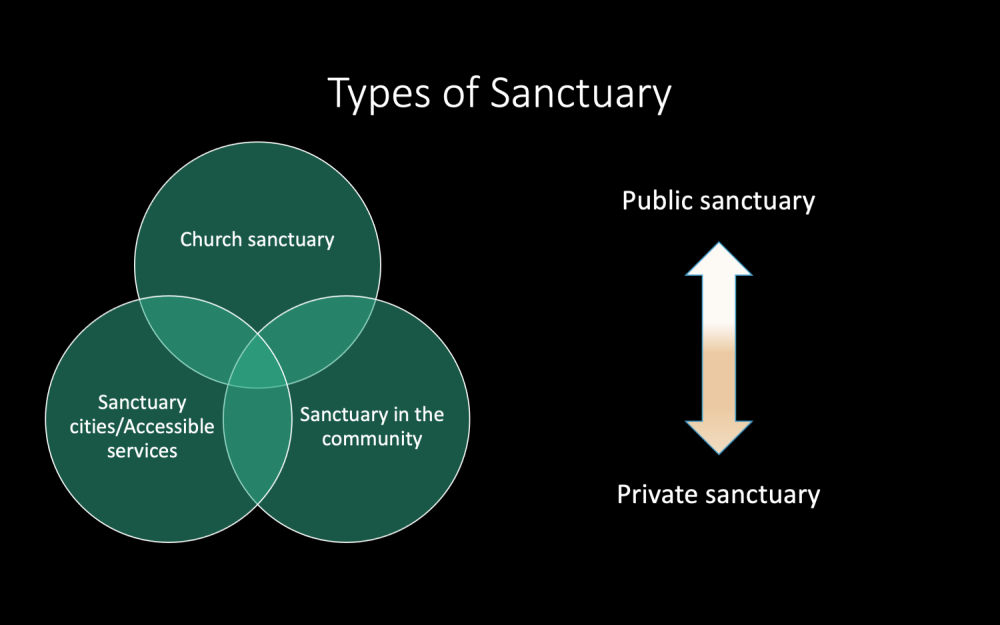Sanctuary refers to a place of safety and refuge. Sanctuary as a form of civil initiative becomes necessary when the safety of refugees is threatened, often when a state does not recognize someone’s fear of persecution. The practice of offering sanctuary comes from a commitment to protect members of our communities from deportation and enforced poverty.
Sanctuary is often associated with taking residence in a church or place of worship as a form of protection from deportation. However, church sanctuary is one of many tools used by sanctuary groups to support refugees. Sanctuary may involve sanctuary city policies such as non-cooperation with immigration enforcement and access to services for residents regardless of immigration status; it may be offered as informal communities providing practical and emotional support in solidarity with refugees; and it may be offered through sanctuary in a church or place of worship. These three forms of sanctuary strengthen and support one another, together creating a robust sanctuary for refugees.
At times, taking sanctuary is a public event, intended to raise awareness about the plight of an individual or family or about the systemic failures of the refugee determination system. Other times, people take or offer sanctuary privately to ensure the safety and well-being of the individuals involved.
The Canadian Sanctuary Network uses casework, public education, and advocacy to support refugees and to seek structural change. Our goal is to strengthen Canada’s refugee protection system and to find a remedy for people who were wrongly denied refugee status.
